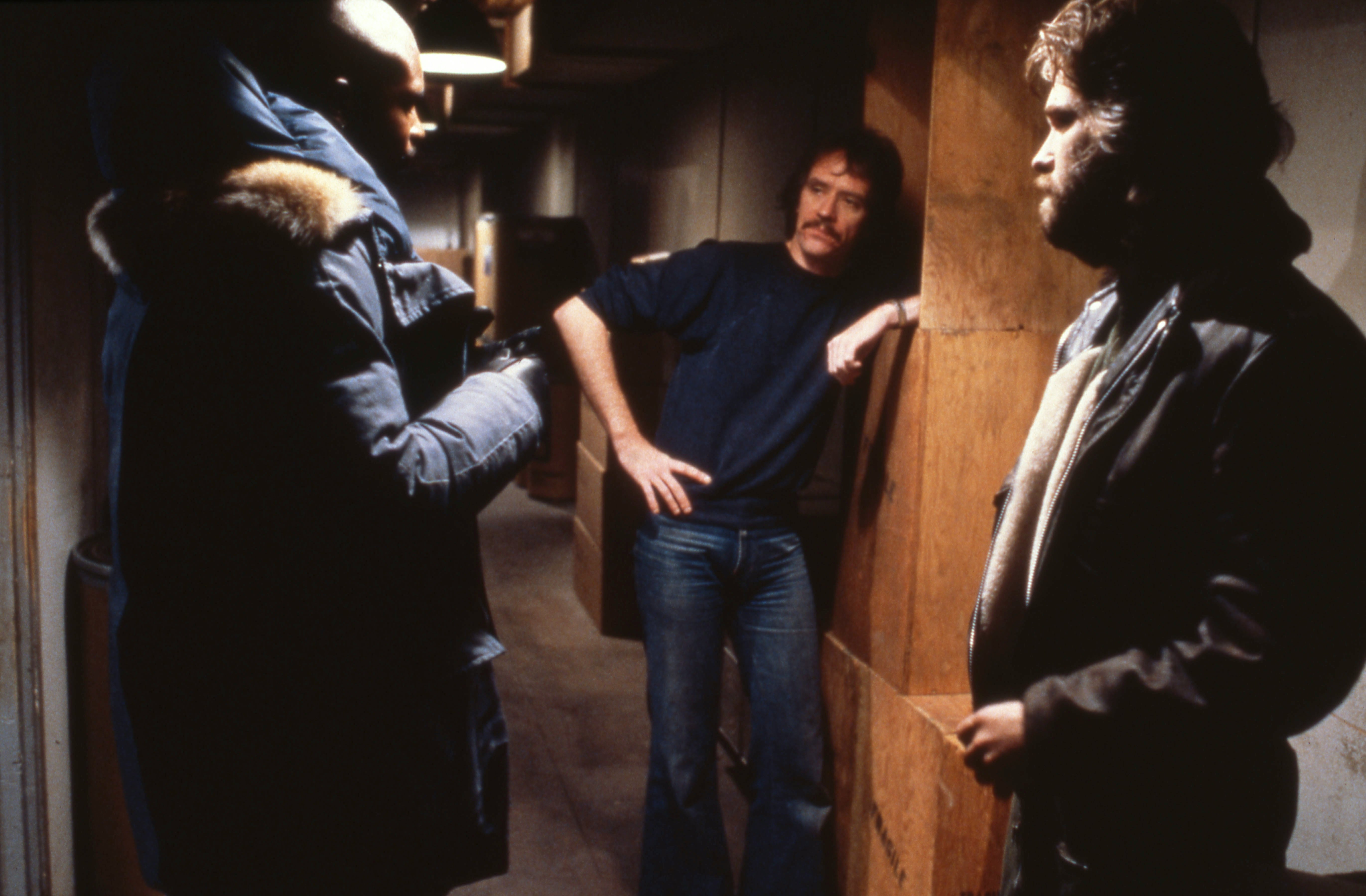
A Venn diagram showing where the American AIDS crisis overlaps the making of John Carpenter’s 1982 body-horror masterpiece The Thing would be a pair of circles drawn side by side. Bill Lancaster started writing the latter in 1979 and took four drafts to finish it. Doctors picked up on the spread of AIDS in 1981; while the virus first took root in the U.S. in the 1960s, no official diagnoses were made until decades later.
But 40 years after the film premiered, the parallels between The Thing and the epidemic it accidentally mirrors are unmistakable. Many viewers now see the shape of an AIDS allegory in the story of unsuspecting scientists who bring a shapeshifting alien horror into their Antarctic research base and descend into dreadful paranoia as the creature systematically absorbs and copies members of their team.
The characters are all men, just like the majority of those first diagnosed with AIDS. Infection is determined with a blood test. There’s no telling who has “The Thing” and who doesn’t at a glance. And the creature does horrible things to the human body, too (or at least its imitation of the body). The last of these is most important because The Thing’s special effects work is one of its hallmarks: gorily, goopily, the flesh of human and canine hosts alike rends, melts, and peels as tentacles explode from chest cavities, stomachs become gaping maws lined with jagged teeth, and speech is replaced with inchoate howls.
All of this works as a metaphor, even if it wasn’t intended as one. The AIDS crisis exists in the film on a molecular level, absorbed into it rather than directly inserted by Lancaster’s writing. Strictly speaking, Carpenter didn’t set out to make a horror movie about AIDS. He set out to make one about the breakdown of trust between peers. (And also maybe to do justice to his source material, John W. Campbell Jr.’s 1938 novella Who Goes There?, as well as Charles Nyby’s 1951 screen adaptation, The Thing From Another World.)

On The Thing’s 40th anniversary, contemporary horror should take note of what Carpenter and Lancaster achieved: crafting one of the genre’s most enduring allegories by avoiding an explicitly allegorical approach. Swaths of today’s horror cinema put the allegory first and the details second, telling viewers right off the bat what they’re meant to get from the story and negating any need for independent interpretation.
Hereditary is about inherited family trauma. It Follows is about sexual trauma and the spread of STDs. Halloween (2018) and 2020’s The Invisible Man are about survivors’ trauma. #Alive, The Sadness, Sea Fever, Alone, and Safer at Home are about pandemics. Candyman (2021) is about the ills of gentrification, just like Bingo Hell and Black as Night.
These movies, plus countless others, trend toward didacticism: They are about what they’re about, and make little attempt to disguise their messages and themes. They adapt social issues into horror on a surface level, and so “surface” is all they have.

There are exceptions — blatantly allegorical horror movies that handle their subject matter in new, surprising ways. In Get Out, Jordan Peele baldly confronts two-faced American liberal racism with astonishing blunt force. Jennifer Kent’s The Babadook speaks frankly about the toll grief takes on its protagonist’s sanity while expressionistically feeding into raw terror. Natalie Erika James dramatizes mental decline via Alzheimer’s in Relic with tenderness to offset its relationship to monster films. Each of these movies shares a common framework of fresh, personal vision, helping them transcend the one particular issue they’re tackling.
Horror movies don’t have to be inscrutable to be good, and they don’t have to make their social commentary by accident. But The Thing is a lasting reminder that often the greatest commentary bleeds into cinema on a subconscious basis. The AIDS motif emerges organically. Carpenter and Lancaster didn’t specifically have AIDS in mind, but they did subtextually draw on a universal paranoia that dovetailed with growing fears provoked by the crisis. They picked up on a general fear that was in the air, whether anyone knew the fear’s exact source just yet.

They then couched that sensation in piles of gooey homemade viscera and abidingly disgusting prosthetics engineered by special effects genius Rob Bottin, Lancaster’s trim and muscular writing, Carpenter’s meticulous filmmaking, and an ensemble cast operating at top nerve-shredding capacity. We remember The Thing today for the experience: The nauseating pleasure of seeing bodies torturously reshaped into monstrosities heretofore unimaginable, the unbearable tension straining the atmosphere between Russell and his co-stars (especially Keith David and Wilford Brimley), and the way Carpenter invites us to play detective as the Thing infects each character one by one. The guessing game the film gifts its audience — who’s human, and who’s pretending? — is abetted by subtle craftsmanship from sight to sound. Costumes matter as much as keys jangling as they hit the floor.
In other words, you can watch and appreciate The Thing as a gruesome alien invasion movie with masterful practical effects and an all-timer Kurt Russell performance. But you can also watch and appreciate it as a window into American society at the AIDS epidemic’s onset — and, in a more timely sense, as an unexpected reflection of the distrust and division of our current epidemic as well.
That’s how the classics survive: with an elasticity that gives them relevance years beyond their first release. But like a team of scared researchers taking a blowtorch to a petri dish full of blood, it’s your job to root it out.







